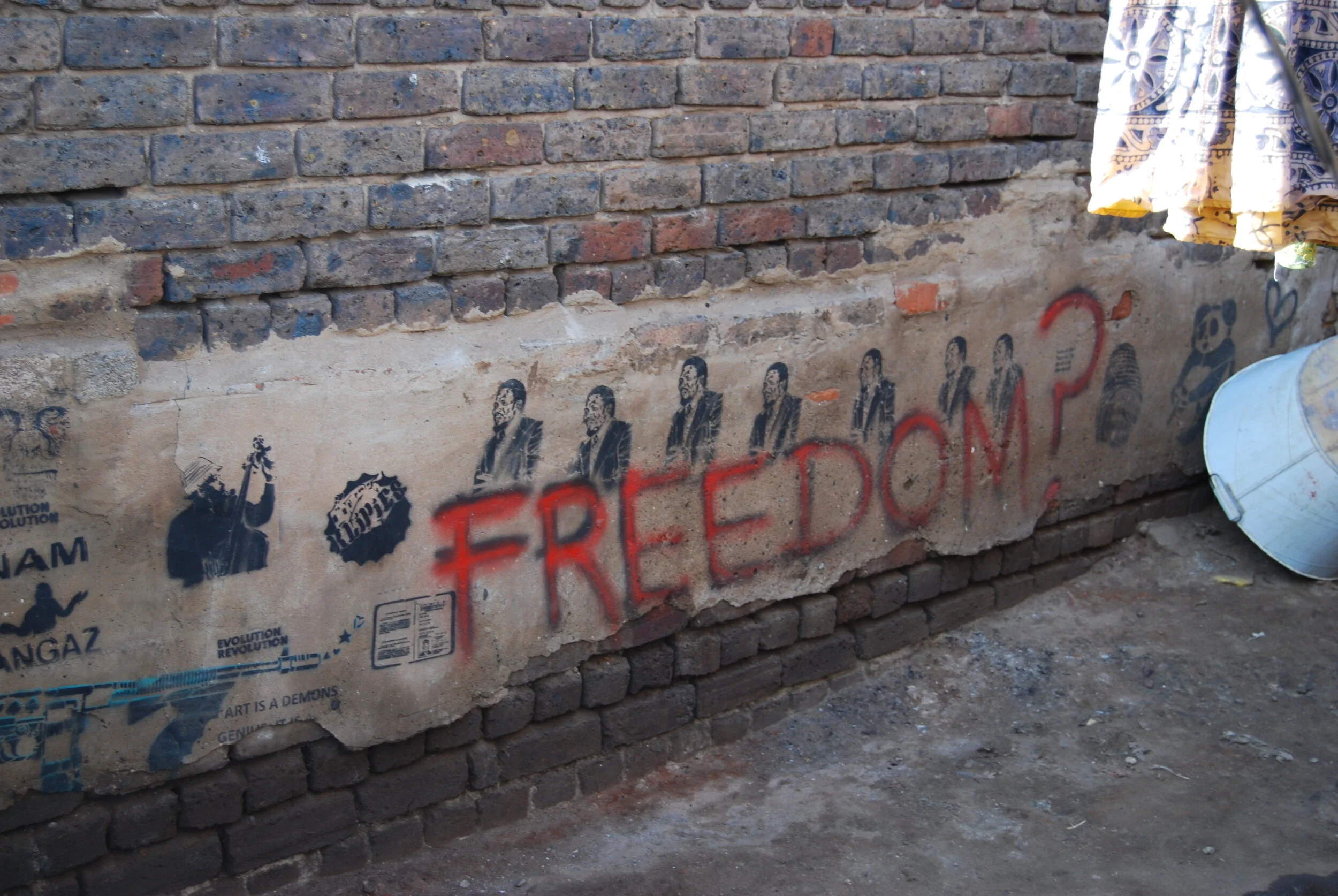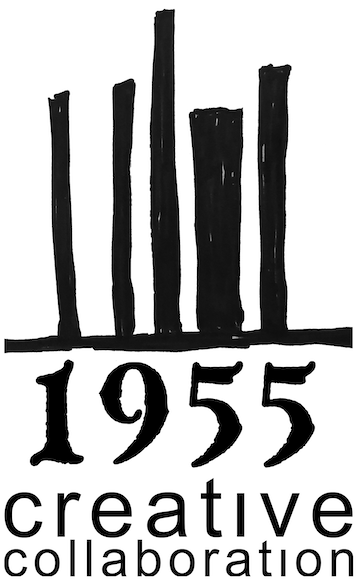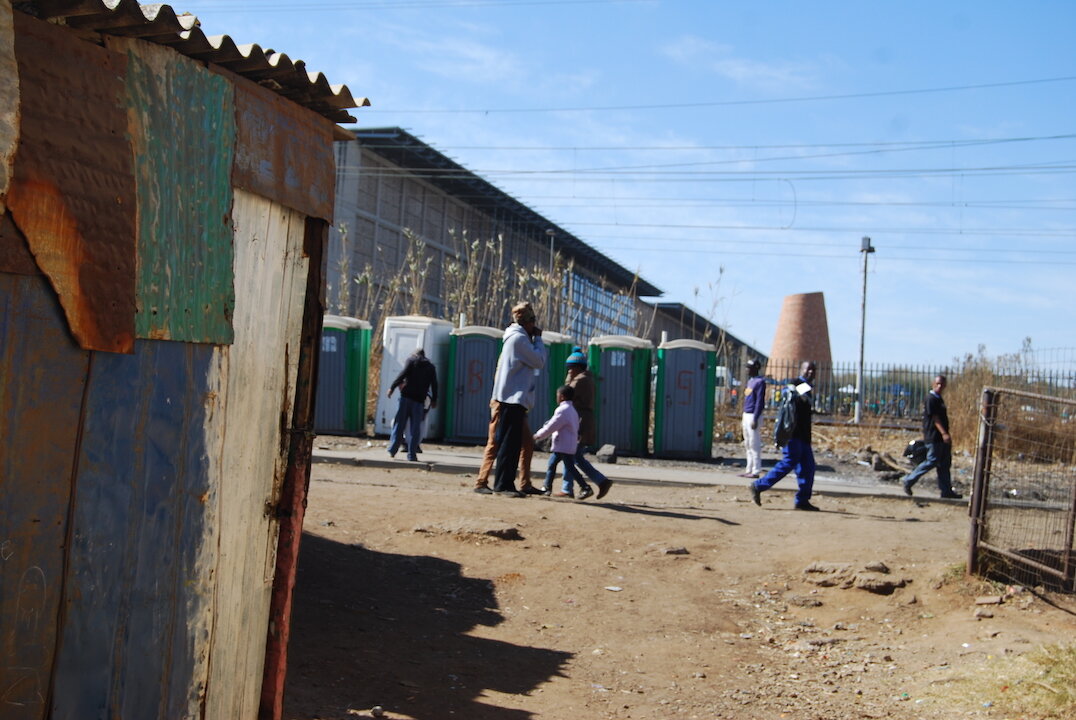
Radio 1955: the voice of freedom in Kliptown
© kk
The story.
Radio 1955 is a reference to South Africa’s Freedom Charter and our belief that it’s tenets remain the way forward. Starting a Kliptown community radio station is a longtime dream of 1955’s co-founder Thabang (a former news and sports reader on EldosFM) and his friends.
We envision the station as a voice from and to the people of this community, a voice for everyone.
Increasingly access to information requires access to the internet, for Kliptown residents this is an obstacle. Such obstacles create boundaries, limitations. Today, instead of boundaries we need solidarity. We see a local radio station’s programming as a point of access. It can inform and respond to local issues, discuss critical social topics, and showcase local talents. It becomes a way to break down boundaries.
Our vision: the station will collaborate with local musicians, comedians, filmmakers, dancers, actors, journalists, and… to harness the power of art-based communication and develop creative programming.
The programming: we have the relationships in place to partner with community leadership and residents to create real community participation. Identified areas for programming:
Community development, addressing Kliptown’s urgent housing and basic service provision needs;
High unemployment, a resource for mentorship, skills training and job search;
Education, childhood reading on the airways and broadcasting education opportunities for all ages;
From the residents: Kliptown needs a place to laugh at the joys and cry at the tragedies of our own lives, to be informed on key community issues.
photo courtesy of Nkwanyana, 2012
The history.
Famously, Kliptown is the place where over 3,000 people met in 1955 for the Congress of the People. They came to hear the reading and witness the signing of South Africa’s Freedom Charter. The community itself dates back to 1902 when it was one of Johannesburg’s few thriving multiracial, multicultural neighbourhoods. Stories of the “old days” can still be heard in the reminiscences of the community’s elders and seen as their faces light up at the memories of those by-gone times.
In contrast, today, Kliptown’s physical architecture - Charlotte Maxeke’s home, Mandela’s hideout, Gerald Sekoto’s yellow house, the Sans Souci Bioscope to name a few - and the shacks that have grown up around them are crumbling and collapsing. And as the elders point out, the human toll of that collapse can be seen in the streets.
photo courtesy of Kornienko, 2015
The community.
On the surface the community’s contrast is striking. The vast emptiness of the monumental architecture of the Walter Sisulu Square stands at odds with the density of the zinc shacks and their people just meters away. In 2005, a vibrant, dirt market space was transformed into a monument to the anti apartheid stalwart Walter Sisulu. In November 2019, it was made a National Heritage Site. Traders are not allowed to use the square.
Kliptown’s once tight-knit population has been divided and designated into 13 separate “informal settlements”. The areas are being renamed and social cohesion lost. Crime is on the rise. Many older women no longer want to leave their homes. Young people feel that there is nothing for them. The community is losing its sense of oneness, and with it its sense of hope.
But as Thabang, Ginger and Robert know from lived experience, there is much more to the story of this struggling community as a place. In addition, Robert, Thabang and Kristen have collaborated for seven years on research around Kliptown’s built environment. These stories from Kliptown are rarely heard. Radio 1955 seeks to give them a voice.
photos courtesy of Kornienko, 2014
The station.
The location for the broadcast booth is in Freedom Charter Square squatter camp. The site was decided on in partnership with the community’s leadership. Despite the dense living conditions, this small space had long been identified as a place to establish a social resource for the community. It sits on the physical and emotional edge between the planned and the occupied spaces of the city. Here, it will become a landmark reflecting the tension between these two parts of the local neighbourhood. We hope that it will contribute to bringing them together.
map courtesy of City of Johannesburg, 2019 annotated by author





